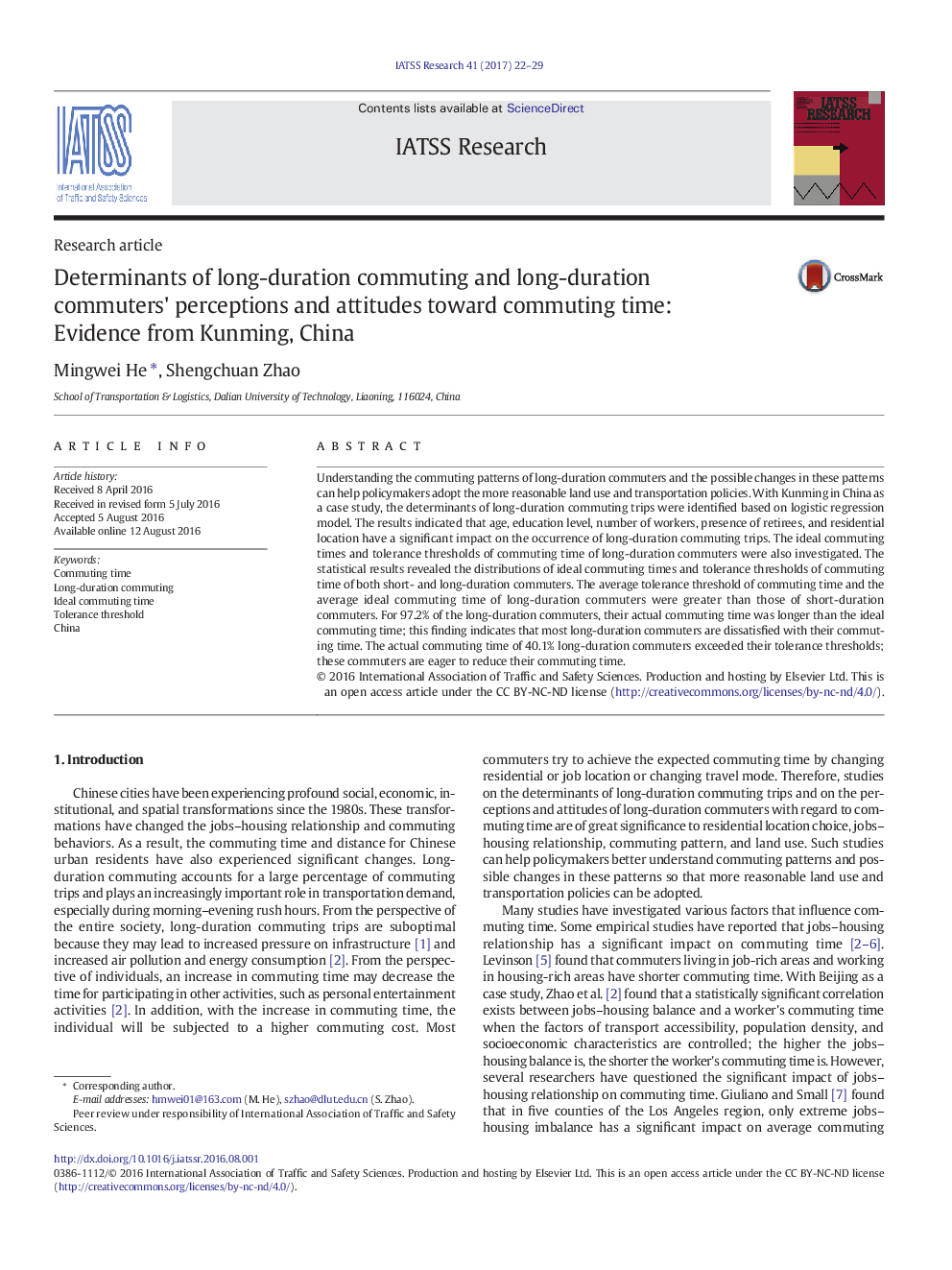| Article ID | Journal | Published Year | Pages | File Type |
|---|---|---|---|---|
| 5124702 | IATSS Research | 2017 | 8 Pages |
â¢We identified the determinants of long-duration commuting trips in China.â¢Distributions of ideal commuting times and the tolerance thresholds were presented.â¢Presence of retirees significantly affects long-duration commuting trips.â¢The actual commuting time of 40.1% long-duration commuters exceeded their tolerance thresholds.
Understanding the commuting patterns of long-duration commuters and the possible changes in these patterns can help policymakers adopt the more reasonable land use and transportation policies. With Kunming in China as a case study, the determinants of long-duration commuting trips were identified based on logistic regression model. The results indicated that age, education level, number of workers, presence of retirees, and residential location have a significant impact on the occurrence of long-duration commuting trips. The ideal commuting times and tolerance thresholds of commuting time of long-duration commuters were also investigated. The statistical results revealed the distributions of ideal commuting times and tolerance thresholds of commuting time of both short- and long-duration commuters. The average tolerance threshold of commuting time and the average ideal commuting time of long-duration commuters were greater than those of short-duration commuters. For 97.2% of the long-duration commuters, their actual commuting time was longer than the ideal commuting time; this finding indicates that most long-duration commuters are dissatisfied with their commuting time. The actual commuting time of 40.1% long-duration commuters exceeded their tolerance thresholds; these commuters are eager to reduce their commuting time.
